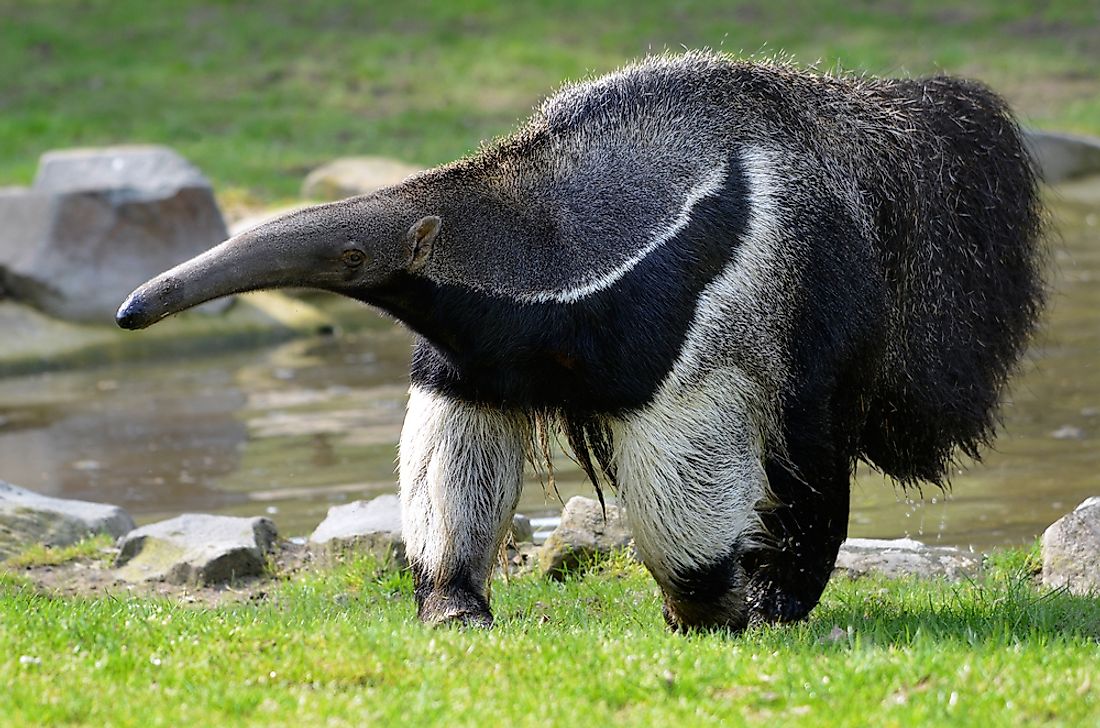The Four Types of Anteaters

The term anteater is a common name given to the four extant species of mammals of the suborder Vermilingua. However, each of the four individual species of anteaters comprises of names from other languages including English. Anteaters are among the three families of the only surviving group of mammals that were once diverse and inhabited the region of South America (the other two are armadillos and sloths). Anteaters were once speculated to be related to pangolins and aardvarks due to the similarities of the physical characteristics of the two animal species. However, such similarities have since been deduced to be of convergent evolution compared to common ancestry.
4. Northern Tamandua
The northern tamandua (Tamandua Mexicana) is a small anteater in the family of Myrmecophagidae of the tamandua species. The species inhabits the tropical and subtropical forests of Mexico, Central America, as well as the edge of the northern Andean Mountains. The northern tamandua which resembles a middle sized anteater has small eyes, a long snout, big ears and a prehensile tail. The animal's fur is a pale yellow/tan color with a distinctive black fur resembling a vest over its back, shoulder, and sides. The prehensile tail is hairless on its underside, and at the end, the fore feet have only four toes while the hind feet have five toes. Both males and females are of the same color and size ranging from 40 to 51 inches in length including the tail. Adult northern tamandua weighs between 7.1 to 11.9 pounds. With a long extendable tongue covered in sticky saliva the animal, just like the other species of anteaters has adapted to its unusual diet of ants and termites.
3. Southern Tamandua
Also known as lesser anteater or the collared anteater, southern tamandua (Tamandua tetradactyla) is a South American species of anteater mainly found in Trinidad, Uruguay, Venezuela, southern Brazil, and northern Argentina. The southern tamandua is a solitary animal that inhabits many habitats ranging from arid, savannas to highly disturbed and mature secondary forests. The animal is generally about 3 feet and 11 inches in length, and uses its strong four claws to defend itself and to break insect nests. The southern tamandua is found in regions with elevations of 5,200 feet inhabiting both wet and dry forests. However, the animal is commonly found near rivers and streams especially in habitats with epiphytes and thick vines.
2. Silky anteater
The silky anteater (Cyclopes didactylus), also known as pygmy anteater, is the only living species of anteaters in the Cyclopes genus and Cyclopedidae family. The animal is mainly found in South and Central America. With proportionately larger crania and shorter faces, the silky anteaters are the smallest living anteaters compared to other species. The adult anteater can grow to a range 14 to 18 inches from head to the tail and weighs about 0.35 to 0.8 pounds. The animal has a dense and soft fur whose color ranges from yellowish to gray with a silvery luster. It has black eyes and red soles on its feet. Silky anteaters inhabit a broad range of forest types including mangrove, semi-deciduous and tropical evergreen forests at an elevation of 4,900 feet.
1. Giant anteater
Also known as Antbear, the giant anteater (Myrmecophaga tridactyla) is a huge insectivorous mammal species that is indigenous to South and Central America. The giant anteater is classified in the order Pilosa, the same as sloths. In contrast to the arboreal and semi-arboreal nature of the other living species of sloths and anteaters, the giant anteaters are mostly terrestrial. With a length of 5.97 to 7.12 feet and a weight of 60 to 86 pounds for females and 73 to 90 pounds for males, the animal is the largest species of its family. The giant anteater is recognized by its bushy tail, distinctively colored fur, elongated snout, and long fore claws. The giant anteater inhabits several habitats including rainforests and grasslands primarily feeds on ants and termites. The International Union for Conservation of Nature listed the giant anteater as vulnerable.











